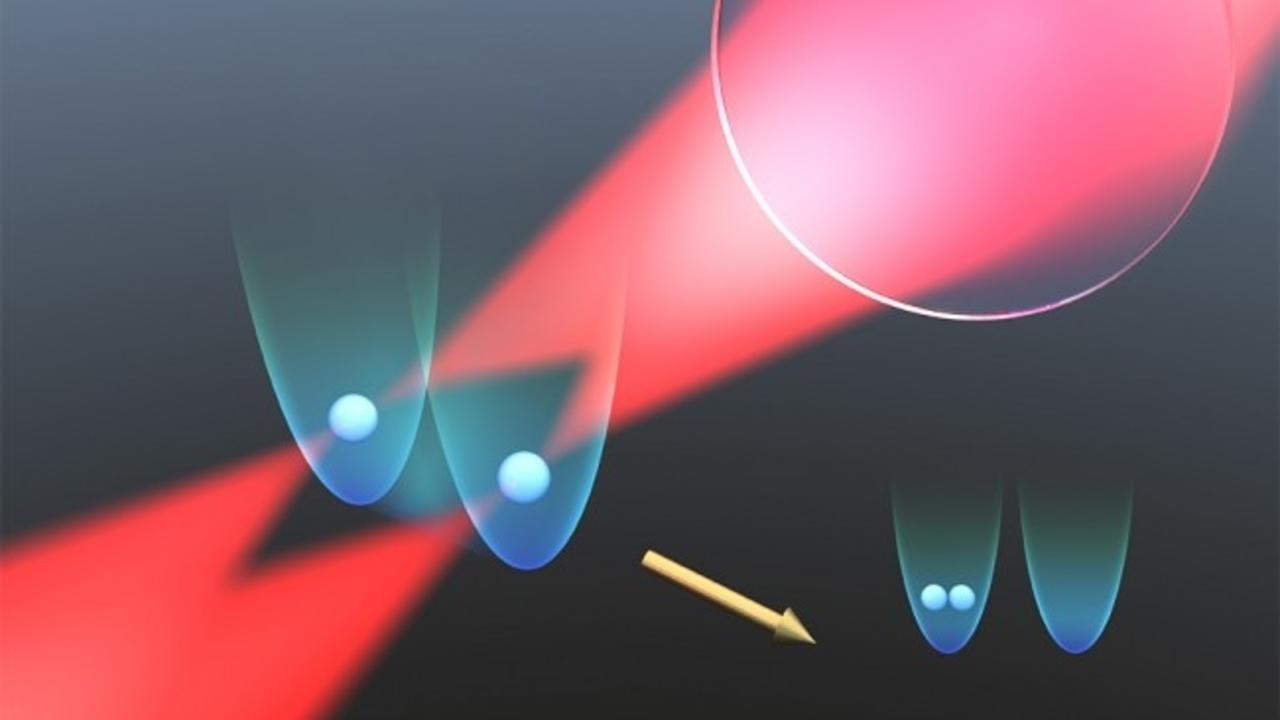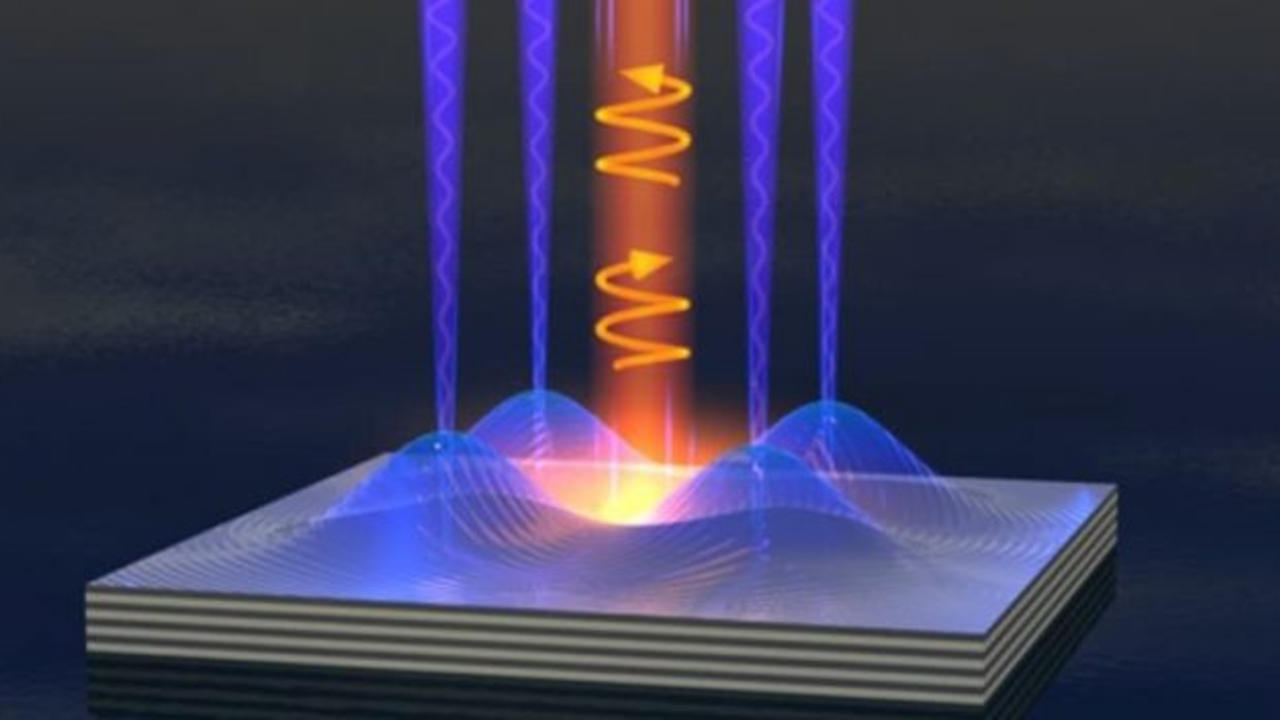Science News
& Faculty Articles
An Approach to Manipulate Small Objects with Light

Article by Dr. Olivier Alirol, Resonance Science Foundation Research Scientist
Suspected from the outset Kepler’s observations of comet tails, the fact that light exerts forces on matter, and therefore on objects is now well established. Thanks to the work of Arthur Ashkin among many others, optical traps are now a reality. Using laser beams optical levitation of microspheres is used nowadays in many applications from stretching DNA to nanotechnology, spectroscopy, stochastic thermodynamics and critical Casimir forces.
Structuring light makes optical manipulation techniques possible, like using the Spatial Light Modulators (SLMs) to produce holographic optical traps (HOTs). These Spatial Light Modulators are liquid crystal technology with a fast and precise control of the beam shape used to control multiple particles in 2D and 3D configurations.
Previously holographic traps were limited to particular classes of light (scalar light), so it is very exciting that we can reveal a...
First Virtual Reality Simulation of a Supermassive Black Hole

Image from original paper: it depicts the virtual simulation of Sag. A* for an observer placed very close to it.
Article by: Dr. Inés Urdaneta, Physicist at Resonance Science Foundation
As mentioned in a previous article, the Event Horizon Telescope is an international collaboration aiming to obtain the first real image of the event horizon (EH) of a black hole using a set of antennas scattered around the globe. EHT has been monitoring and collecting data from the supermassive Black Hole (SMBH) at the core of the Milky Way galaxy, known as Sagittarius A*, and results are expected very soon, probably 2019.
Now, for the first time, the virtual reality simulation of Sagittarius A* has been achieved by a group of scientists at Radbound University and collaborators from the Institute of theoretical Physics, in Germany, and the Mullard Space Science laboratory, at the University College London. In their article “Observing Supermassive Black Holes in virtual...
Music for the Heart

By Dr.
A recent publication indicates Yoga-Music at bedtime enhances the hearts variability in beat to beat distances. The heart is not only pumping, but pulsing with fractal fluctuations. The more flexible it is, the healthier you are. The pace will increase while breathing in and slow down during exhalation. The breath is giving a feedback to the nervous centers in the most archaic parts of the brainstem, the elongated spinal cord in the neck. It is responsible for the basic functions controlled by the unconscious nervous system. The variability of the heart can be entrained by coherent breathing techniques to a coherent beat-to-beat wave function or even a circular Poincaré-Plot. This state is called cardiac coherence and entrains the brain in its quite long refraction time of the pacemaker cells inside the “Gate to Consciousness” (Thalamus), which is why breathing techniques are used as a...
From the Planck Constant to the Kilogram

Article by Dr. Olivier Alirol, RSF Research Scientist
The year 2018 is historic for the world of measurement. It will mark the redefinition of the International System (SI), and more particularly of four of its units: the kilogram, the ampere, the kelvin and the mole. In November 2018, the 26th General Conference on Weights and Measures (CGPM) will vote on the new definitions of these units. These should be established on the basis of fundamental physical constants. LNE, the French metrology pilot, is actively contributing to the redesign of SI, in particular through the redefinitions of the kilogram, ampere and kelvin.
The International System of Units (SI) consists of a set of internationally recognized basic units controlled by the Comité International des Poids et Mesures (CIPM).
Today, the IS has 7 units that can be found in all aspects of our daily lives, let alone in the industry:
- Kilogram (Planck Constant, speed of light, time)
- Meter (time and speed of light)
- Second...
Do Galactic Haloes Have A Constant Density?

Article by Dr. Amira Val Baker, Astrophysicist, Resonance Science Foundation Research Scientist
Image ©Pearson Education
Galactic halos – comprising of the theorized dark matter halo– show an interesting characteristic in the constant nature of their volume density.
Galaxies come in all shapes and sizes with the most common and well-studied being similar to our Milky way galaxy and known as disc or spiral galaxies. A well-known problem in physics is the observed rotation velocities of stars with respect to the distance from their galactic centre. These rotation curves, as they are known, intriguingly do not appear as expected – that is they appear flat instead of falling off and decreasing with distance. Read more here.
In the cold dark matter model of the universe these flat rotation curves are attributed to dark matter, hence the name ‘dark matter’ haloes.
In an effort to better understand this, scientists have been comparing the...
Electromics – The Double-Aspect of Life

Article by
Biologist Dr. Daniel Fels recently published an essay in Biology on the interaction of matter and the so-called bioelectricity as a functional unity for regulation of living cells. The editor of the scientific textbook “Fields of the Cell” summarizes evidence of bioelectricity. He discusses interactions of internal bioelectricity with internal biochemical structures, as well as the sensitivity of Biosystems to external physical factors.
Fels explains “bioelectricity is generated by electrical charges of ions and molecules in an aqueous environment. Ions and oscillations of charged molecules as well as chemical reactions lead to electrical currents and electrostatic and electrodynamic fields.” This is very basic in biological systems and differs from the bio-photon discussion. Every heartbeat, nervous excitation or muscle contraction is physiologically...
A Virtual Telescope the Size of the Earth!

By Dr. Inés Urdaneta / Physicist at Resonance Science Foundation
Up to 2016, the biggest telescopes were composed of an array of antennas located in a particular site, like the one at Atacama Desert, in Chile. called ALMA (Atacama Large Millimeter/ Submillimeter Array). Its construction dates from 2004 and consists of sixty-six 8-to-12-meter diameter antennas aiming to receive millimeter wavelengths. Among others things, ALMA is capable of performing deep space detections, what allows to obtain information about the first stars and galaxies that emerged billions of years ago at huge distances from us. Due to the universe expansion, most of these objects’ emissions have stretched out to the millimeter and submillimeter wavelengths.
Using a technique known as interferometry – or interference pattern between the signals received by each antenna, to recompose a complete unique image- the 66 antennas at ALMA work together as though they were a single...
A Two Layers Graphene Superconductor Material

Article by Dr. Olivier Alirol, Physicist, Resonance Science Foundation Research Scientist
Scientists have discovered that a two graphene layers can conduct electrons showing superconductivity if the two hexagonal nets are twisted against each other at a 1.1 degree angle. This finding could lead to room-temperature superconductors, a hypothetical material exhibiting superconductivity at temperatures above 0 °C (273.15 K). Most superconductors work only at temperatures close to absolute zero. Even ‘high-temperature’ superconductors are working in reality at −140 ºC. A material that displayed the property at room temperature — eliminating the need for expensive cooling — could revolutionize energy transmission, medical scanners and transport.
Increasing the temperature at which superconductivity occurs could have phenomenal technological applications
A current that could flow forever without losing any energy means transmission of power...
Time Crystals: A New Form Of Matter That Could Change Everything!

Article by Dr. Amira Val Baker, Astrophysicist, Resonance Science Foundation Research Scientist
Of all the science-fiction-sounding names that have come to fruition in recent years, perhaps none is as mysterious or seemingly fictitious as time crystals. The name evokes something between Back to the Future and Donnie Darko, and the reality is perhaps crazier than either.
Two separate groups of scientists recently reported that they observed time crystals, which lends credence to the idea that this theoretical state of matter is something humans can actually create and observe. And indeed, time crystals can be grown in a child’s bedroom.
However, it requires nuclear sensors and lasers to help time crystals reach their full potential and then measure and observe them. This combination of dramatic scientific terms and shockingly simple objects is a great analogy for time crystals as a whole.
Read on to understand what they are and how they might affect our lives.
...
Liquid Light at Room Temperature!

By Dr. Inés Urdaneta / Physicist at Resonance Science Foundation
When we think about liquids, we think about one of the four known states of matter: gas, liquid, solid and plasma (charged or ionized gas). Light being mass-less, the words liquid and light put together seems at first like an oxymoron. But not so long ago, in 2013, a theorized similar situation predicted in 2007 and called “photonic molecule” was made artificially. In these experiments, photons – quantum of electromagnetic fields, which have no rest mass and travel at the speed of light in vacuum – bind together so strongly, they behave as molecules, and so acting as if they had mass.
Another case concerning light which reproduces the physics of molecules, consists of photons confined to two or more coupled micro-optical cavities, since it reproduces the behavior of interacting atomic energy levels. For this reason, it has also been termed photonic molecule, which is an alternative...



